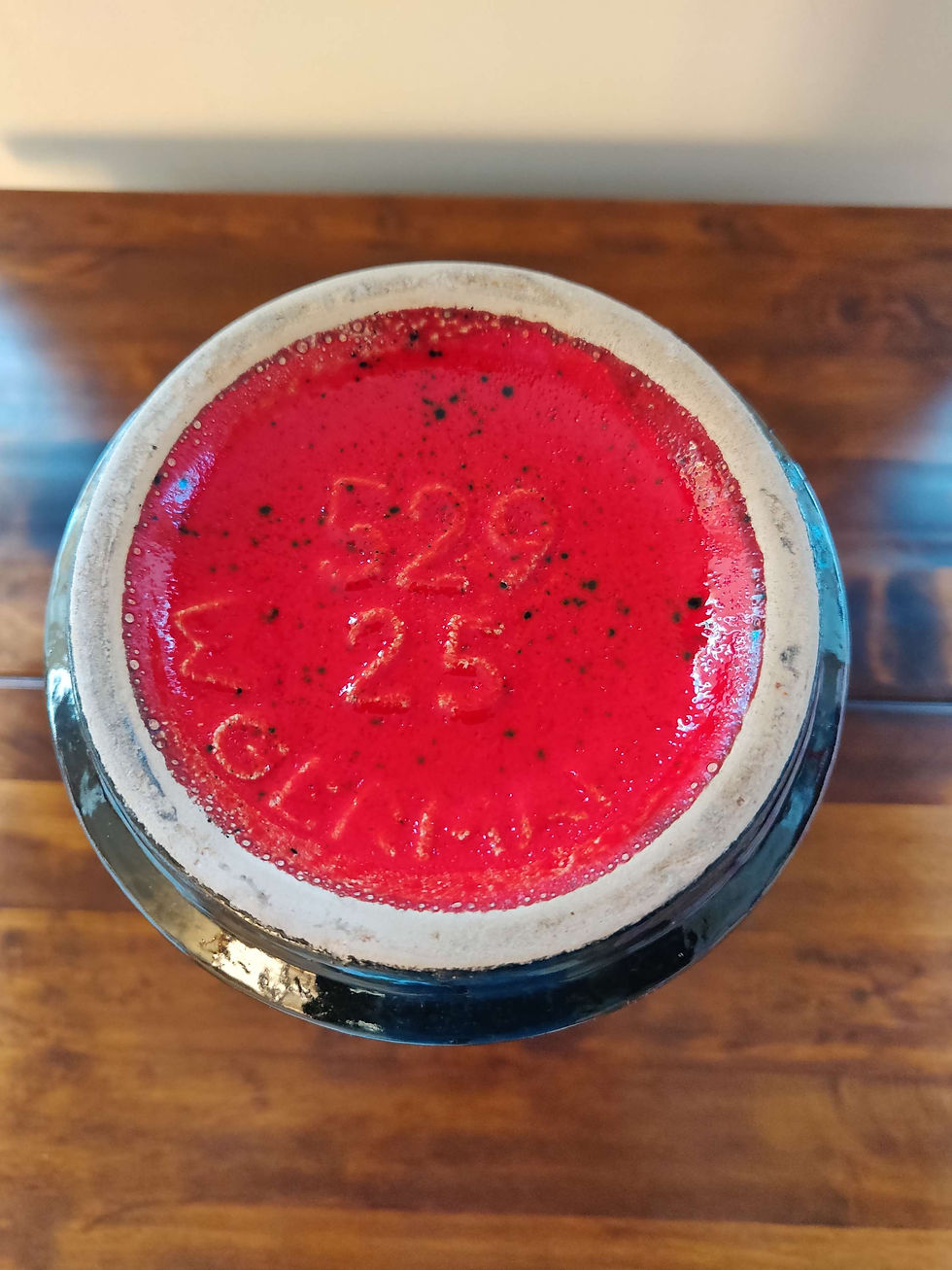West German Fat Lava Vases
- The Time Traveller
- Jan 25, 2024
- 2 min read
West German Fat Lava vases are iconic pieces of mid-20th-century ceramic art known for their bold and vibrant designs. This style emerged in the 1960s and 1970s from various West German pottery manufacturers and is characterized by its lava-like glazes, often in bright colours, and distinct, textured surfaces. We recently aqcuired this vibrant red coloured vase, to add to our antique and vintage collection.

Here's more information about West German Fat Lava vases:
1. Origin and History:
The term "Fat Lava" refers to the thick and chunky glazes that resemble molten lava. This style originated in the ceramics studios of West Germany during the mid-20th century. West German pottery manufacturers, such as Scheurich, Bay, and Jasba, among others, played a significant role in producing these distinctive pieces.
2. Design Characteristics:
Fat Lava vases are known for their bold and expressive designs. The glazes often feature rich, vibrant colours, including shades of orange, red (like this one), brown, and green. The surfaces are heavily textured, creating a tactile and visually dynamic appearance reminiscent of flowing lava. Some vases may also incorporate additional decorative elements, such as raised patterns, incised lines, or other abstract designs.
3. Variety of Shapes and Sizes:
Fat Lava vases come in a wide array of shapes and sizes. Common forms include floor vases, jug shapes, and cylindrical vases (like our example), each showcasing the unique characteristics of the Fat Lava glazes. Some vases have handles, while others feature more sculptural or asymmetrical designs.
4. Manufacturers:
Various West German pottery manufacturers contributed to the production of Fat Lava vases. Scheurich is particularly well-known for its Fat Lava creations, including the popular "West Germany" labeled pieces. Bay Keramik, Jasba, Carstens, and others also produced notable examples of Fat Lava ceramics.
5. Collectibility:
West German Fat Lava vases have gained popularity among collectors for their unique and nostalgic aesthetic. Collectors often appreciate the diversity of shapes and glazes within the Fat Lava style, and certain rare or highly decorative pieces may command higher prices.
6. Identifying Marks:
Many West German Fat Lava vases have markings on the base that indicate the manufacturer, model number, and sometimes the country of origin. The "W. Germany" mark is a common indicator, especially on earlier pieces. On our piece below note the numbers 529/25 and W German.

7. Availability:
Fat Lava vases can be found in vintage and antique shops, online auction platforms, and collector's markets. The availability of specific pieces may vary, and as collectors we enjoyed the thrill of discovering this unique find when we were out and about on our travels.
If you're interested in adding this particular West German Fat Lava vase to your collection, explore our product page (link below). These distinctive vases not only serve as decorative art pieces but also carry a nostalgic charm that reflects the creative spirit of the mid-20th-century West German pottery scene.


What an amazing piece of art a real antique if the future